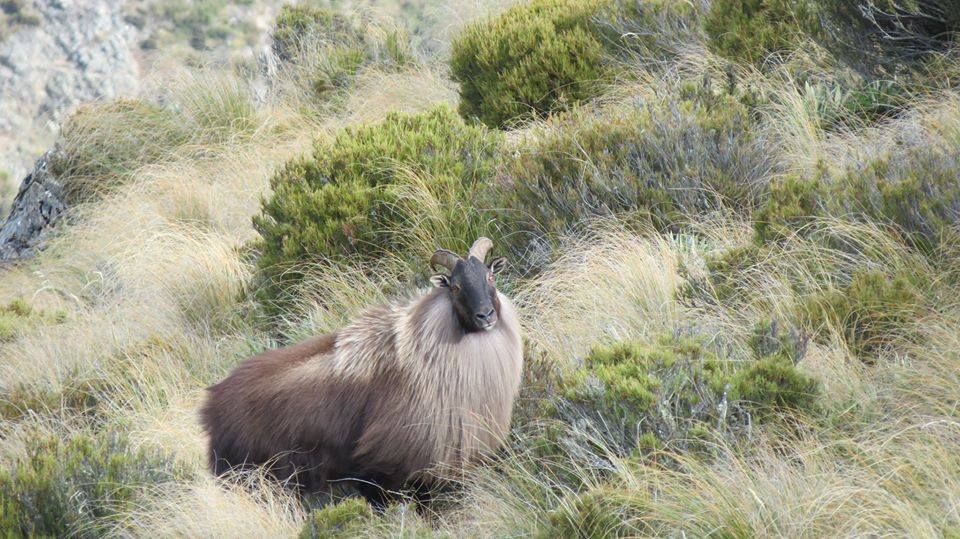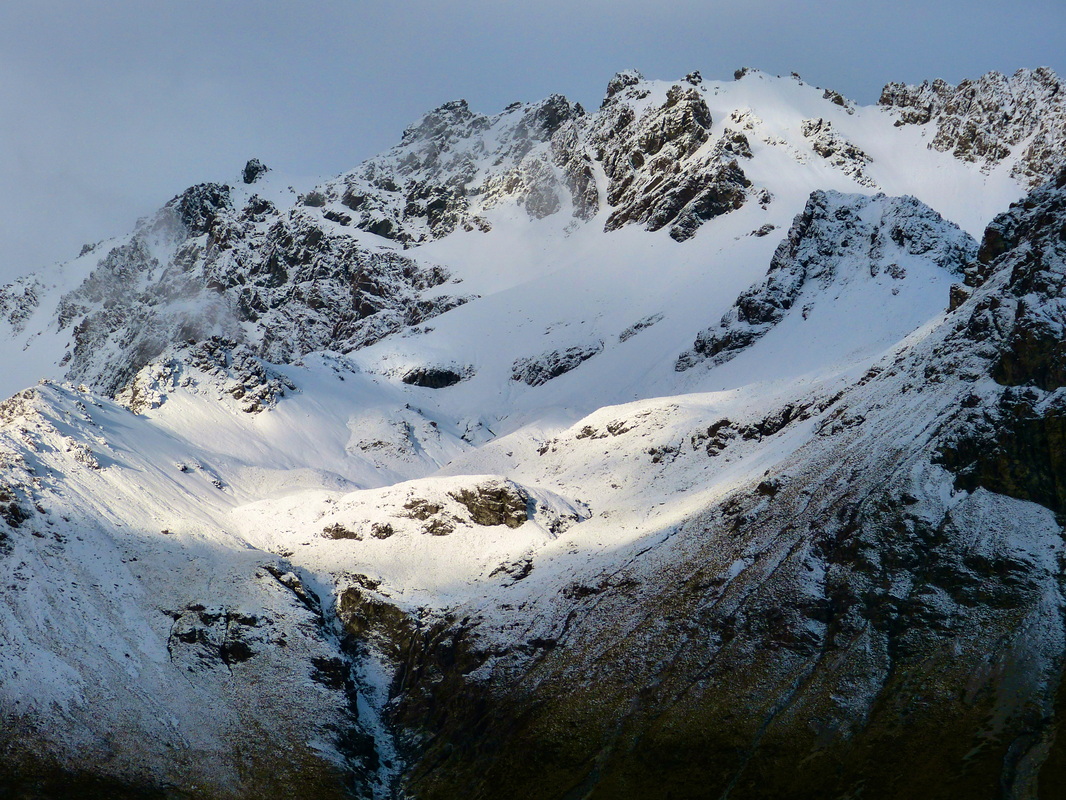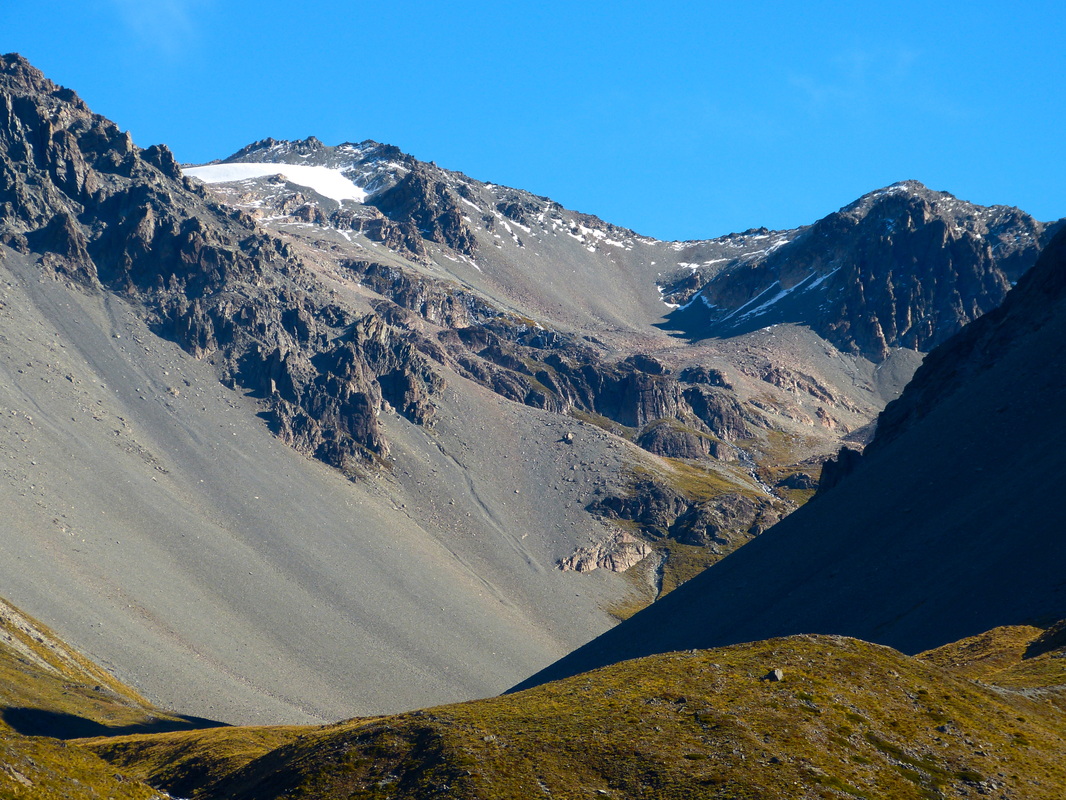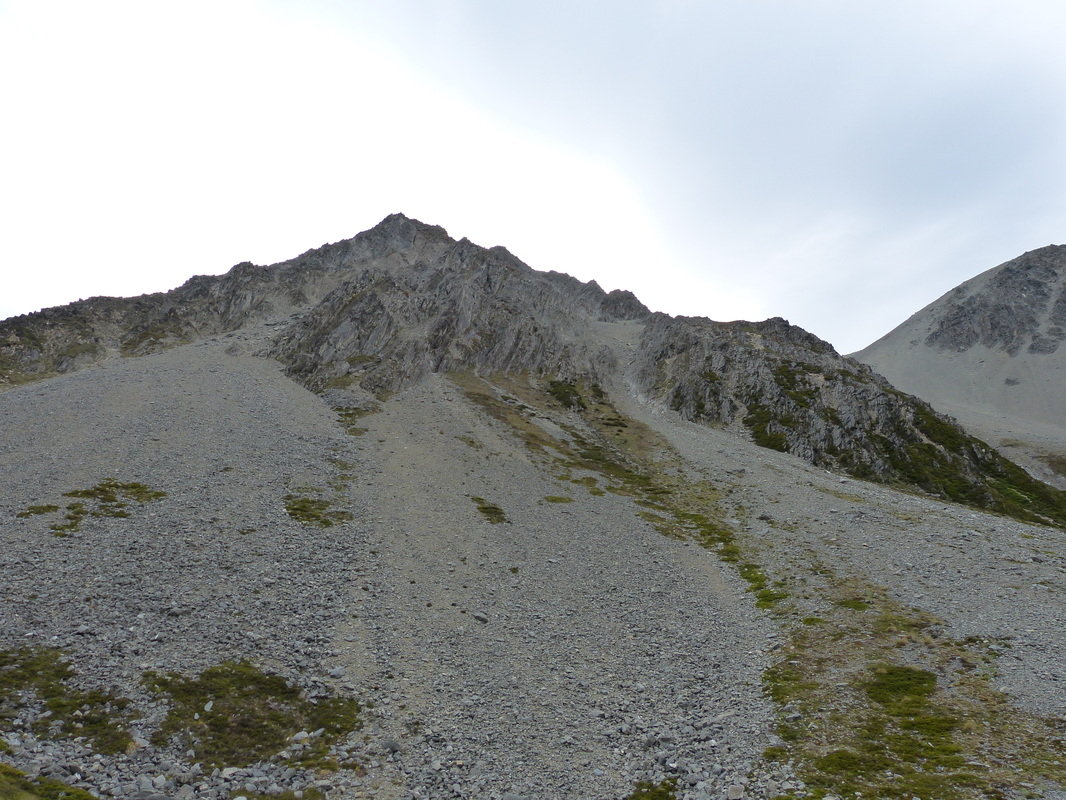Like most mountain dwelling animals Tahr are an extremely addictive species to hunt, and as they should be. With their amazing coat, long manes, short thick horns, fantastic edibility and all around tenacity they not only look the part but taste great and offer a real challenge in some very nasty terrain and conditions.
The main huntable population of Tahr inhabit the South Island of New Zealand where they were released near Mt Cook (NZ’s highest peak) in 1904 as a gift from the Duke of Bedford’s Woburn herd. There have been several additions to the original 6 released and to say that they have adapted well is an understatement. With a total lack of predators in New Zealand except for humans their numbers have quickly grown to the point where they are now managed by NZ’s Department of Conservation (DOC) from the air with professional shooters as well by recreational hunters.
The prime time to hunt Tahr is between March and June (Southern Hemisphere’s fall – winter) with most bulls being close to or in full winter coat by then. They tend to rut from mid-May to early June in the areas I hunt but the bulls will often be found with the nannies from March onwards. Tahr like most mountain herbivores have exceptional eye sight and seem to rely on this more than their other senses, watching your approach from their lofty perches amongst the cliffs and bluffs of the Southern Alps. They are however very curious and can be enticed out of their rocky strong holds once in range by simply whistling loudly or even calling out.
I personally like to hunt Tahr on the east side of NZ’s southern Alps due to the more stable weather conditions that tend to predominate on that side of the range compared to the Western ranges that often catch some very nasty wind and low pressure systems coming up out of the Antarctic . The West coast does have some serious benefits though with a tendency to hold bigger bulls although there are still plenty of trophy bulls on the East coast.
You can hunt Tahr on just about any DOC land and while there is more than enough information on the DOC website to get you started in your planning, NZ is not a place I would recommend going pure DIY for your first hunt or even first few hunts depending on your experience. The mountains are beautiful but extremely dangerous and unpredictable so I would recommend hiring a guide for your first trip. Their local knowledge of not only Tahr but the unique weather systems to these mountains ensures a safer, more enjoyable and successful trip into what is some of the most unbelievably beautiful but dangerous country in the world to hunt. If you’re an experienced mountain huner, after an initial guided trip, going DIY is very doable in NZ. There are a lot of high mountain huts the DOC maintains in many of the major valleys and these can be booked and stayed in for a small fee or you can set up and fly camp in more remote areas away from the huts as well.
On a recent hunt on the East coast I used the Tahr’s curiosity to my advantage to pull a bull from a bluff after he spotted me climbing into the basin through a frozen waterfall.
I’d walked down river about a kilometre to a vantage point that would offer 360 degree views of the entire valley and set up with my spotting scope and binos keen to see if I could spot a bull. It didn’t take long to spot a few animals but the two good bulls I could see were way up the head of the valley and out of reach for that day’s. I continued to look around a little closer and see what, if anything would show itself.
After glassing for a while I decided to have a snooze in the sun for a few hours as most of the Tahr had bedded down for the day. I awoke with fresh eyes and quickly started to pick up some promising looking animals that had remained hidden in amongst the rocky crags during my earlier glassing session. With it now being about four in the afternoon I needed to get a massive wriggle on so I threw my spotter and bipod into the pack and headed around the bottom of the bluffs with a plan to climb up an all but empty waterfall/river.
After climbing roughly half way up to the Tahr I’d spotted, a bull and some nannies moved into the bluffs on my right with two nannies still half way between the scree and the bluffs, looking at me. Thankfully they were not alarmed as they were still easily 500m away. I climbed to a position where I had a clear view of the bluffs and with the guard nannie watching, I searched for the bull that I knew was tucked amongst the rocks somewhere. I couldn’t see him so went for a trick that has worked in the past and put the cross hairs on the guard nannie and at 300m tipped her off the cliff and onto the scree. Animals appeared from the rocks but there still was no sign of the bull so I fired again and missed another nannie. As I reloaded a young bull appeared above me so I shot him as well. He fell and rolled down the scree and I waited to see if the bull would show himself. Five minutes went by with nannies watching me and whistling, unsure where to go with no guard nannie to lead them away and out of danger. It was then the bull showed himself at 318m and at a very steep 70 cosine on my indicator. He was milling about amongst the rocks and wouldn’t stand still long enough for me to get a steady shot on him. Finally he dropped down into a small chute with two nannies in front of him and stopped broadside as the nannies blocked his way further into the chute. I put the crosshairs on his high shoulder and fired. The sound of a hit returned and I got back on my scope to see him jump down where the nannies had gone and disappear out of sight. I had 2 rug /meat animals within easy reach but I was going to have to climb to near the top of the ridge to see if the bull was indeed dead and down in the frozen waterfall chute that he’d disappeared into.
Head of the River Valley
On a recent hunt on the East coast I used the Tahr’s curiosity to my advantage to pull a bull from a bluff after he spotted me climbing into the basin through a frozen waterfall.
I’d walked down river about a kilometre to a vantage point that would offer 360 degree views of the entire valley and set up with my spotting scope and binos keen to see if I could spot a bull. It didn’t take long to spot a few animals but the two good bulls I could see were way up the head of the valley and out of reach for that day’s. I continued to look around a little closer and see what, if anything would show itself.
After glassing for a while I decided to have a snooze in the sun for a few hours as most of the Tahr had bedded down for the day. I awoke with fresh eyes and quickly started to pick up some promising looking animals that had remained hidden in amongst the rocky crags during my earlier glassing session. With it now being about four in the afternoon I needed to get a massive wriggle on so I threw my spotter and bipod into the pack and headed around the bottom of the bluffs with a plan to climb up an all but empty waterfall/river.
After climbing roughly half way up to the Tahr I’d spotted, a bull and some nannies moved into the bluffs on my right with two nannies still half way between the scree and the bluffs, looking at me. Thankfully they were not alarmed as they were still easily 500m away. I climbed to a position where I had a clear view of the bluffs and with the guard nannie watching, I searched for the bull that I knew was tucked amongst the rocks somewhere. I couldn’t see him so went for a trick that has worked in the past and put the cross hairs on the guard nannie and at 300m tipped her off the cliff and onto the scree. Animals appeared from the rocks but there still was no sign of the bull so I fired again and missed another nannie. As I reloaded a young bull appeared above me so I shot him as well. He fell and rolled down the scree and I waited to see if the bull would show himself. Five minutes went by with nannies watching me and whistling, unsure where to go with no guard nannie to lead them away and out of danger. It was then the bull showed himself at 318m and at a very steep 70 cosine on my indicator. He was milling about amongst the rocks and wouldn’t stand still long enough for me to get a steady shot on him. Finally he dropped down into a small chute with two nannies in front of him and stopped broadside as the nannies blocked his way further into the chute. I put the crosshairs on his high shoulder and fired. The sound of a hit returned and I got back on my scope to see him jump down where the nannies had gone and disappear out of sight. I had 2 rug /meat animals within easy reach but I was going to have to climb to near the top of the ridge to see if the bull was indeed dead and down in the frozen waterfall chute that he’d disappeared into.
The Bull Was Above These Bluffs
Thirty minutes later I was at the bottom of the chute, and by this time it was getting late so the thermals had changed and the air was pushing down the hill with the faint scent of a bull Tahr and hopefully a dead one just above me. I climbed up the left hand side and looked into the head of the chute to see nothing and I thought “Bugger, well if he isn’t below me now then maybe I missed?!”
I decided to climb higher up so I could see down further into the steep chute and there he laid, stone dead less than 20m below me. To make sure I tossed a rock at him just to make sure he wasn’t going to get up and make a mess of the situation in the tight cover he’d escaped into. To say it was dangerous where he’d gone down for the last time is an understatement. Ice covered nearly every rock that offered a foothold so I climbed down to him with all the caution I could muster. It was precarious enough that I didn’t even take my pack off to photograph him, just sat with him for a minute and then pushed him off the ledge to a better position further down the chute. He rolled another 200m or so before thankfully stopping on the last ledge in the chute before what would have been a big fall off the bluffs. It was here that I finally managed to snap some photos and then left him for a recovery attempt the next day.
Picture
I left him as he lay for the night as it was far too dangerous to work on him in the dark next to a life threatening drop-off in icy conditions. With this in mind, I decided to come down and retrieve him and the others the next day.
The next day I caped him for a full body mount in the daylight and took all the meat including the meat from the other two Tahr that had frozen overnight. After a long day’s work, I climbed down and back to base camp, tired but completely fulfilled. While he wasn’t the biggest bull I’ve taken he had an amazing blonde tipped mane and when finished will look fantastic in my trophy room.





